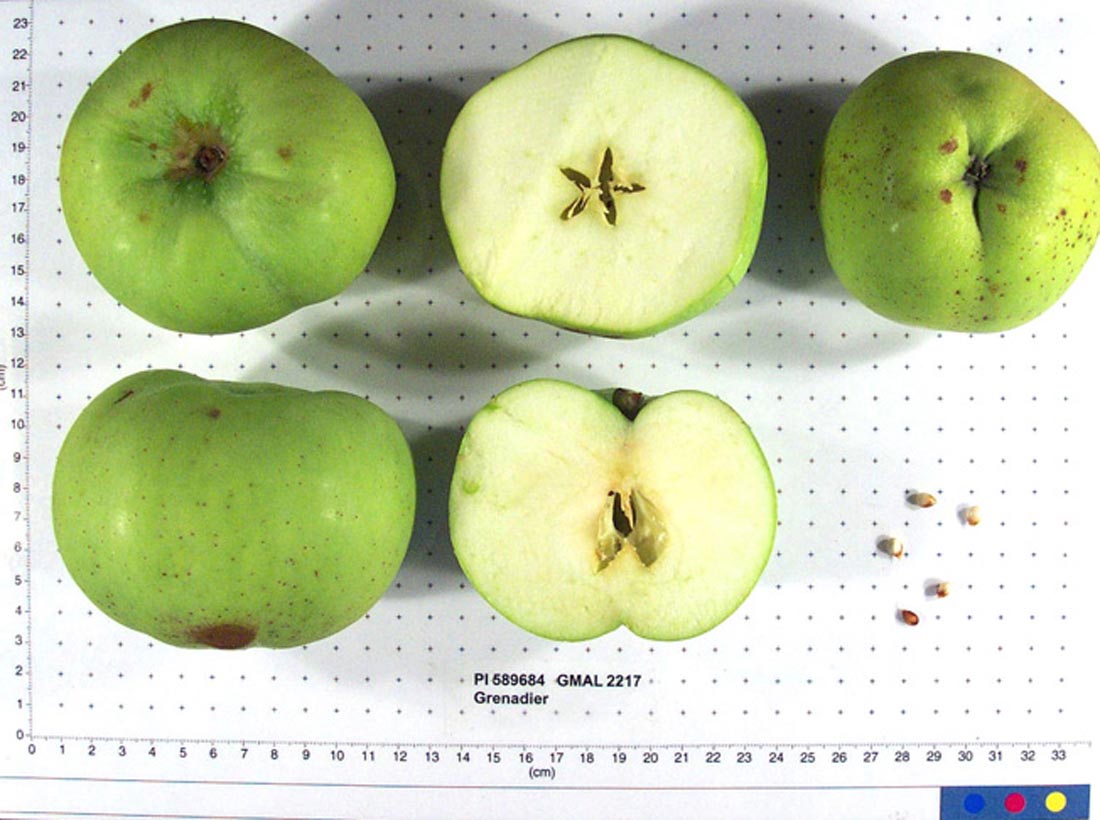Pomiferous
Welcome to the world's most extensive apples (pommes) database.
Information on over 7,000 apples is available here, all carefully researched and provided in a way that is easy to navigate.
Grenadier

type: Cooking, Culinary, Jelly, Pie, Sauce
synonyms: Not the same as @ Grenadine
summary: A tangy cooking and cider apple from the British Isles. Goes well with soft cheeses.
identification: Medium tending to large conic fruit (typically four inches wide, three inches high), pronounced ribbing finishing in a defined crown at the blossom end and frequently irregular shape. Skin is pale green and changes to pale yellow when fully ripe, especially on the side exposed to the sun. The eye is small and closed, set in a shallow and medium wide, lightly puckered basin. The stem is very short and stout, set in a shallow and funnel shaped, russeted cavity.
characteristics: White flesh, fine-grained, firm, crisp and juicy. Tangy.
uses: Best used for cooking. Makes a tart sauce. Also produces a tasty apple jelly, especially if you enjoy eating creamy cheeses like Saint André with it. Apple pies made with Grenadier have a lovely tartness and aroma, but the slices do not hold their shape well.
origins: First documented England 1862. Exhibited by nurseryman Charles Turner of Slough and subsequently promoted by George Bunyard of Maidstone. It was awarded a First Class Certificate by the RHS in 1883. Listed in Robert Hogg's 1884 "Fruit Manual."
cultivation: Moderately vigorous, upright spreading. Spur bearer. Tolerates damp soils. Heavy cropper.
cold storage: Keeps up to three months.
vulnerabilities: Resistant to mildew, canker and scab.
harvest: In the middle of the third period.
notes: Very similar to the Catshead
pollination group: C
pollination peak: 11
ploidism: Partially self-fertile but a compatible pollinizer will maximize the yield.
cold storage weeks: 12
harvest period: 3
Donate a cider?
©2016-2021 Pomiferous.com. All rights reserved